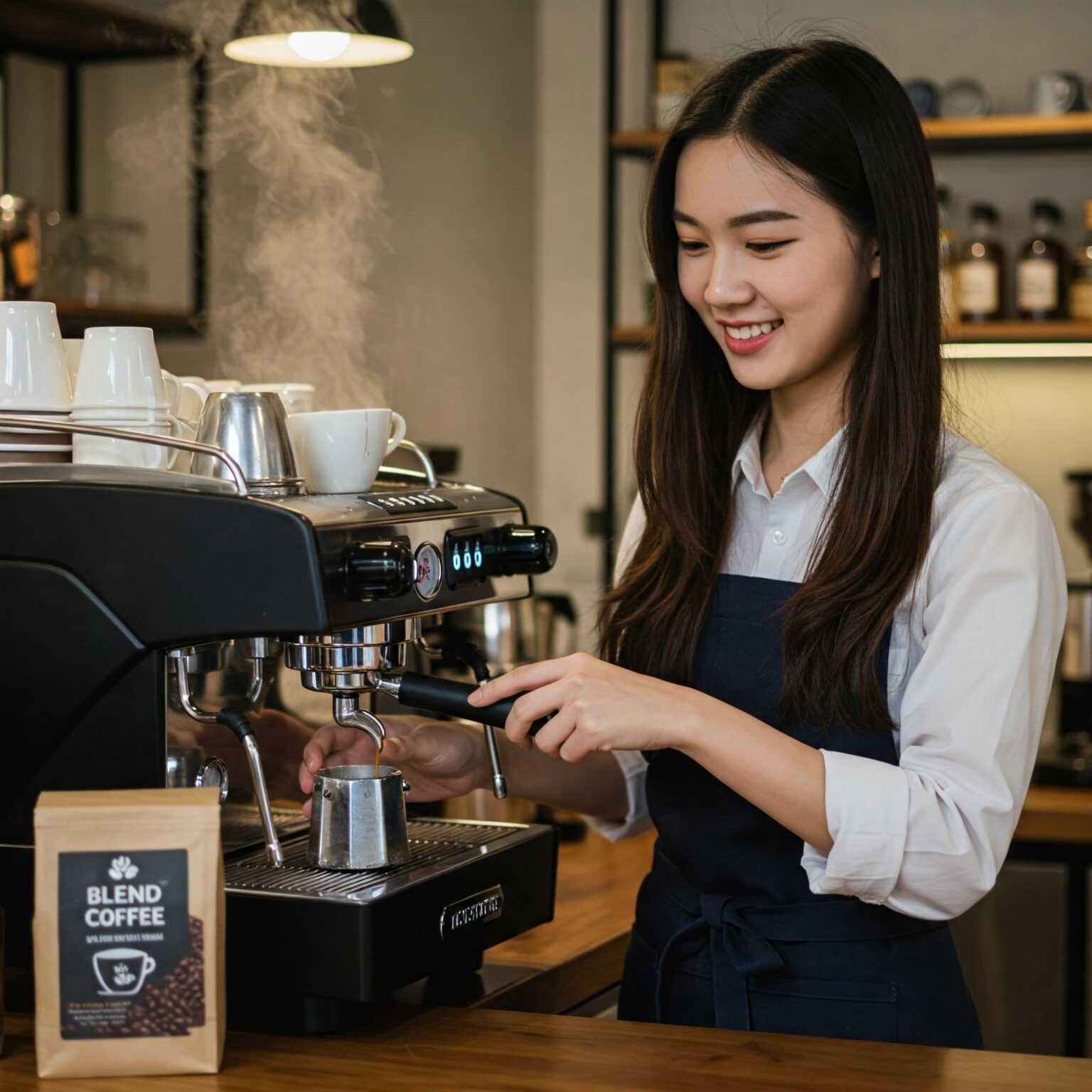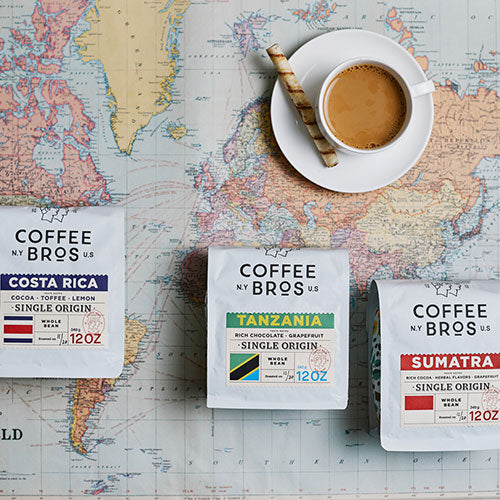Why Brew Lovers Prefer SOE Single Origin Espresso for Purity
Wiki Article
Checking Out the Abundant Tastes of Coffee Beans: a Deep Dive Into Coffee and Blended Coffee Beans
When you discover the rich tastes of coffee beans, you discover a complicated world where each variety brings its very own character to your cup. As you browse via the art of espresso and the imagination behind mixed coffees, you'll start to appreciate the nuances that make each sip one-of-a-kind.The Beginnings of Coffee Beans: Exploring Terroir and Flavor Profiles
When you take a sip of coffee, you're not just appreciating a drink; you're experiencing an abundant tapestry of tastes shaped by the beans' beginnings. Each region produces special taste profiles affected by dirt, altitude, and environment. Beans from Ethiopia usually break with brilliant, fruity notes, while those from Colombia tend to offer a well balanced, nutty sweet taste.As you discover various origins, you'll notice exactly how terroir-- the ecological elements influencing a plant-- plays a crucial duty - Single Origin Espresso. The same coffee range can taste drastically various depending on where it's grown
When you think about these factors, you begin to value the intricacy behind your cup. Each sip narrates of the land and the farmers that nurtured the beans. So, next time you indulge, consider the journey your coffee took before it reached your hands, and relish those intricate flavors that show its beginning.
Recognizing Coffee: The Art and Science Behind the Mixture
When you think concerning coffee, it's not almost the solid flavor; it's likewise about the methods that bring it to life. Understanding just how different preparation techniques effect preference can change your developing experience. Allow's check out the intricacies of coffee prep work and discover the unique taste profiles that make each mug special.Coffee Preparation Techniques
Espresso prep work is both an art and a science, incorporating accurate methods with a deep understanding of coffee. To start, you'll wish to choose high-quality, fresh roasted beans and grind them carefully for optimal extraction (Single Origin Espresso). The work dimension is vital; also crude, and your espresso will certainly be weak, as well fine, and it'll be bitterFollowing, tamp the grounds uniformly in the portafilter to assure consistent extraction. When you lock it into the machine, go for a brewing temperature level between 190 ° F and 205 ° F.As you draw the shot, look for the ideal removal time-- around 25-30 secs. The outcome must be an abundant, velvety espresso with a lovely layer of crema ahead. With technique, you'll understand these techniques.
Flavor Accounts Clarified
The globe of coffee provides a rich tapestry of flavor accounts that can boost your coffee experience. You'll observe a balance of bitterness, level of acidity, and sweetness when you take that first sip. Each espresso bean carries distinct notes, from fruity and floral to nutty and chocolaty. Light roasts typically display intense level of acidity and vibrant tastes, while dark roasts existing deeper, bolder tones.A well-crafted mix could integrate the brilliant notes of an Ethiopian bean with the abundant, chocolatey undertones of a Brazilian bean. Welcome the trip of discovering espresso's varied flavors, and you'll change your coffee ritual right into an exciting experience.
Processing Techniques: Just How They Influence Flavor and Aroma
While it could appear that the beginning of coffee beans is the most considerable element in identifying their flavor and aroma, the handling approaches made use of post-harvest play a just as vital duty. You'll locate that these methods can considerably alter the final preference profile of your mug.For circumstances, the washed process gets rid of the fruit from the beans before fermentation, typically leading to a cleaner, brighter flavor. Meanwhile, the all-natural process leaves the fruit undamaged during drying out, causing a sweeter, fruitier profile.
Various other methods, like honey handling, strike a balance, permitting some fruit mucilage to remain, providing an one-of-a-kind complexity.
Each handling method interacts with the beans' intrinsic qualities, boosting or muting details flavors and scents. When you drink that coffee or combined coffee, keep in mind that the journey from cherry to mug is affected not simply by origin but likewise by just how those beans were refined.
Roasting Methods: Unlocking the Full Potential of Coffee Beans
Roasting methods are important for disclosing the full possibility of coffee beans, as they transform raw, eco-friendly beans into the aromatic, delicious coffee you delight in. The selection of roasting technique-- light, medium, or dark-- substantially affects flavor accounts. Light roasts maintain the beans' natural level of acidity and fruity notes, while tool roasts balance sweet taste and splendor. Dark roasts, on the other hand, highlight bold, great smoky flavors.A slower roast at reduced temperature levels permits for intricate flavors to establish, while a quicker roast can increase anger. By understanding these strategies, you'll reveal a world of flavor, raising your coffee experience to brand-new heights.
The Magic of Blended Coffee: Creating Special Taste Experiences
Producing an unique taste experience with mixed coffee can change your early morning routine into an expedition of taste. By integrating different beans from numerous regions, you can expose a symphony of tastes that boost your mug to brand-new heights. Each blend offers a distinctive profile, stabilizing body, sweetness, and level of acidity to develop something really unique.When you select a mix, you're not simply selecting a coffee; you're choosing a trip across diverse landscapes and societies. Trying out various combinations permits you to find your personal faves, whether you enjoy fruity notes or abundant, chocolatey touches.

Tasting Notes: Acknowledging the Subtleties in Your Cup
As you drink your coffee, you might observe a range of flavors dancing on your Single Origin Espresso taste, each exposing the intricacies of the beans. You may taste the intense acidity evocative citrus or the deep, rich notes comparable to dark chocolate. The sweet taste could evoke honey or caramel, stabilizing the general account magnificently.Take notice of the body of the coffee-- does it feel light and ventilated, or is it full and luscious? The finish, as well, supplies clues; a remaining aftertaste may mean nuttiness or flower touches.

Don't forget to discover the unique characteristics of different origins, as each region presents distinctive tastes - Single Origin Espresso. Ethiopian coffees commonly present fruity notes, while Colombian beans might display an extra spherical sweetness. By recognizing these subtleties, you'll strengthen your recognition for each mug, raising your coffee experience to new heights

Developing Techniques: Making Best Use Of Taste Removal for every single Bean
When you check out the various developing techniques, you'll discover that each strategy can dramatically affect the flavor account of your coffee. From French press to pour-over, each technique removes various compounds, boosting or muting details notes. Utilizing a French press permits oils to stay in the brew, developing a richer taste, while pour-over highlights clarity and illumination.Temperature and grind size also play important duties. A coarser work works best for chilly brews, while a fine work is suitable for espresso. Explore water temperature-- in between 195 ° F and 205 ° F-- can reveal concealed tastes, as well.
Don't forget regarding soaking time; a fast removal can result in sour notes, while over-extraction might generate anger. By readjusting these variables, you can make the most of flavor removal and truly boost your coffee experience. Enjoy the trip of uncovering what technique ideal suits your palate!
Regularly Asked Concerns
What Is the Ideal Water Temperature Level for Brewing Coffee?
The excellent water temperature for brewing coffee's between 195 ° F and 205 ° F. If you utilize water that's as well hot, you'll over-extract flavors; too cool, and you will not remove sufficient. Go for that pleasant place for the ideal mixture!Exactly How Does Grind Size Affect Coffee Taste?
Work dimension substantially influences coffee taste. Finer grinds extract much more oils and tastes, causing a bolder preference, while coarser grinds return a lighter taste. Adjusting grind size aids you achieve your wanted coffee account.Are There Health Benefits Associated With Alcohol Consumption Coffee?

What Is the Distinction In Between Arabica and Robusta Beans?
Arabica beans are smoother and sweeter, frequently including fruity flavors, while robusta beans are more powerful with a bitter taste and greater caffeine material. You'll notice these distinctions in aroma and developing experience.How Can I Store Coffee Beans for Quality?
To store coffee beans for quality, keep them in a closed container, away from light, heat, and dampness. If you just grind what you need right before developing., you'll preserve their flavor longer.Discovering the Rich Flavors of Coffee Beans: a Deep Dive Into Coffee and Blended Coffee Beans.
When you check out the rich flavors of coffee beans, you uncover an intricate globe where each variety brings its own personality to your mug.When you take a sip of coffee, you're not just taking pleasure in a beverage; you're experiencing a rich tapestry of flavors formed by the beans' beginnings.Roasting techniques are important for exposing the complete potential of coffee beans, as they transform raw, environment-friendly beans into the aromatic, savory coffee you take pleasure in.As you drink your coffee, you might discover a range of tastes dancing on your palate, each revealing the intricacies of the beans.
Report this wiki page